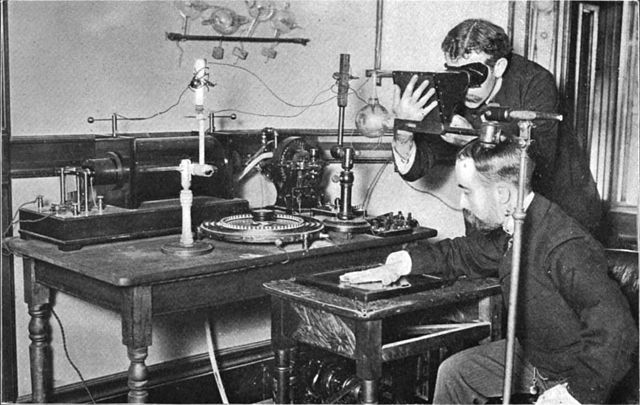Radioactive decay is the process by which an unstable atomic nucleus loses energy by radiation. A material containing unstable nuclei is considered radioactive. Three of the most common types of decay are alpha, beta, and gamma decay. The weak force is the mechanism that is responsible for beta decay, while the other two are governed by the electromagnetism and nuclear force.
Pierre and Marie Curie in their Paris laboratory, before 1907
Taking an X-ray image with early Crookes tube apparatus in 1896. The Crookes tube is visible in the centre. The standing man is viewing his hand with a fluoroscope screen; this was a common way of setting up the tube. No precautions against radiation exposure are being taken; its hazards were not known at the time.
In physics, radiation is the emission or transmission of energy in the form of waves or particles through space or a material medium. This includes:electromagnetic radiation consists of photons, such as radio waves, microwaves, infrared, visible light, ultraviolet, x-rays, and gamma radiation (γ)
particle radiation consists of particles of non-zero rest energy, such as alpha radiation (α), beta radiation (β), proton radiation and neutron radiation
acoustic radiation, such as ultrasound, sound, and seismic waves, dependent on a physical transmission medium
gravitational radiation, in the form of gravitational waves, ripples in spacetime
Some kinds of ionizing radiation can be detected in a cloud chamber.



